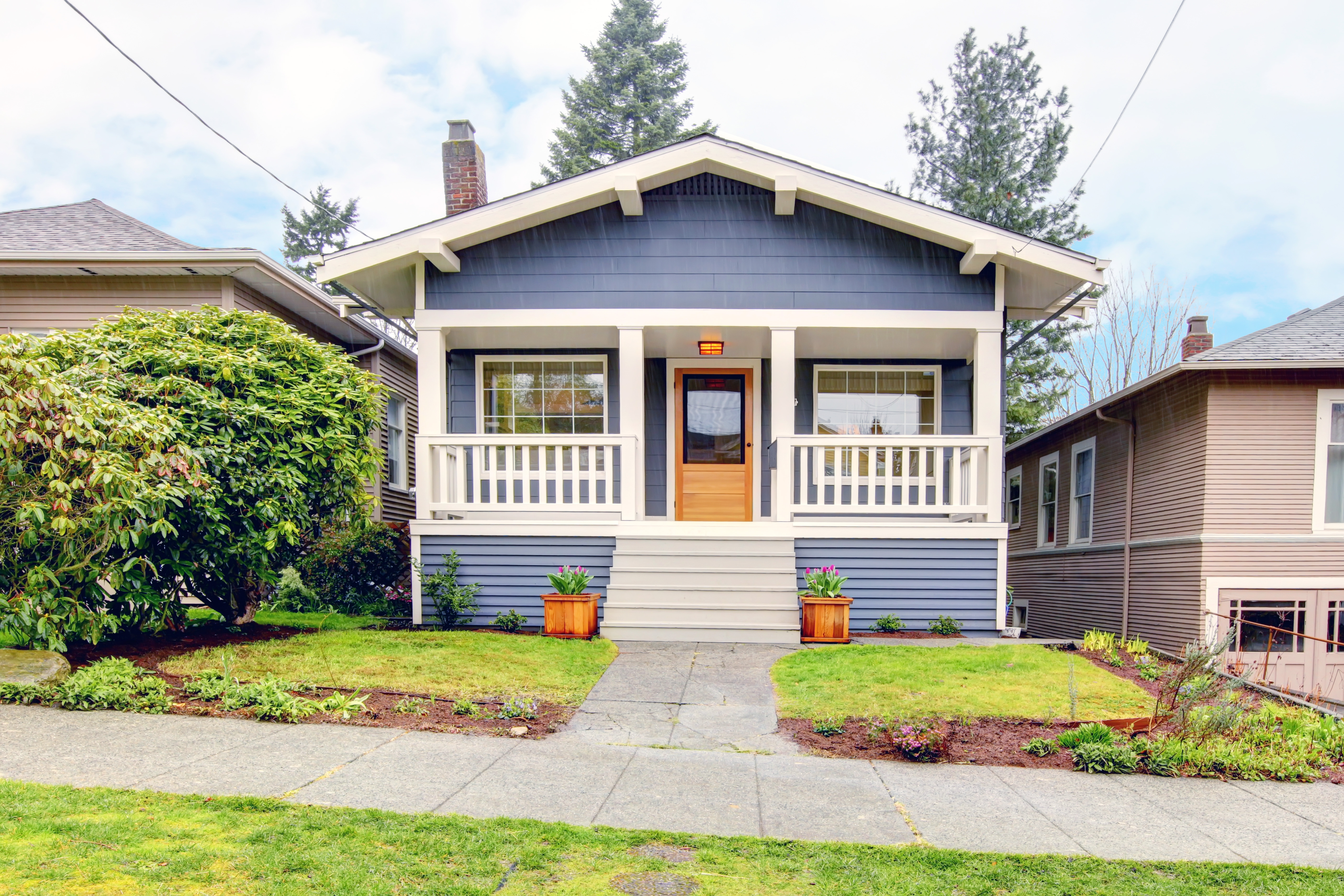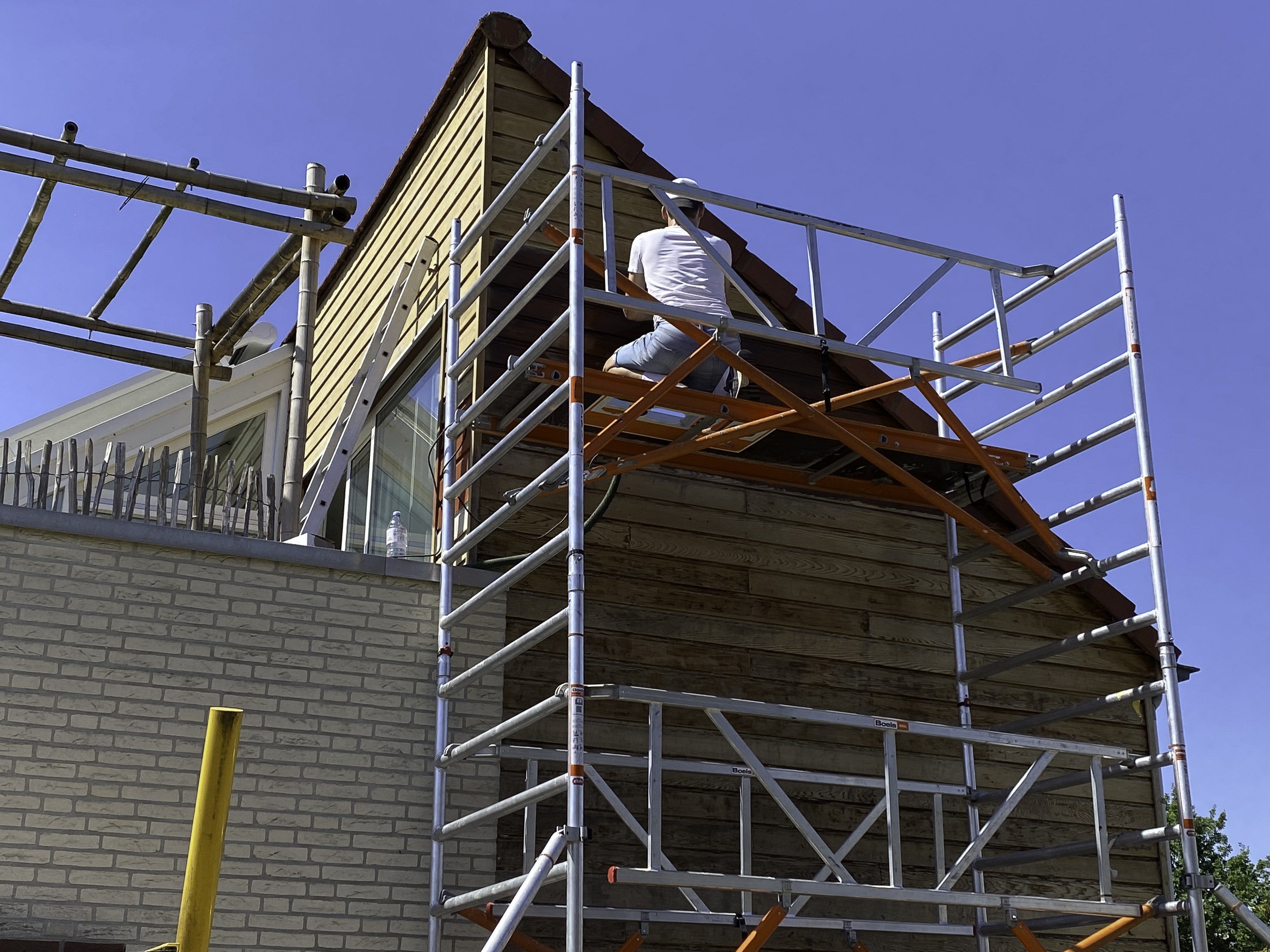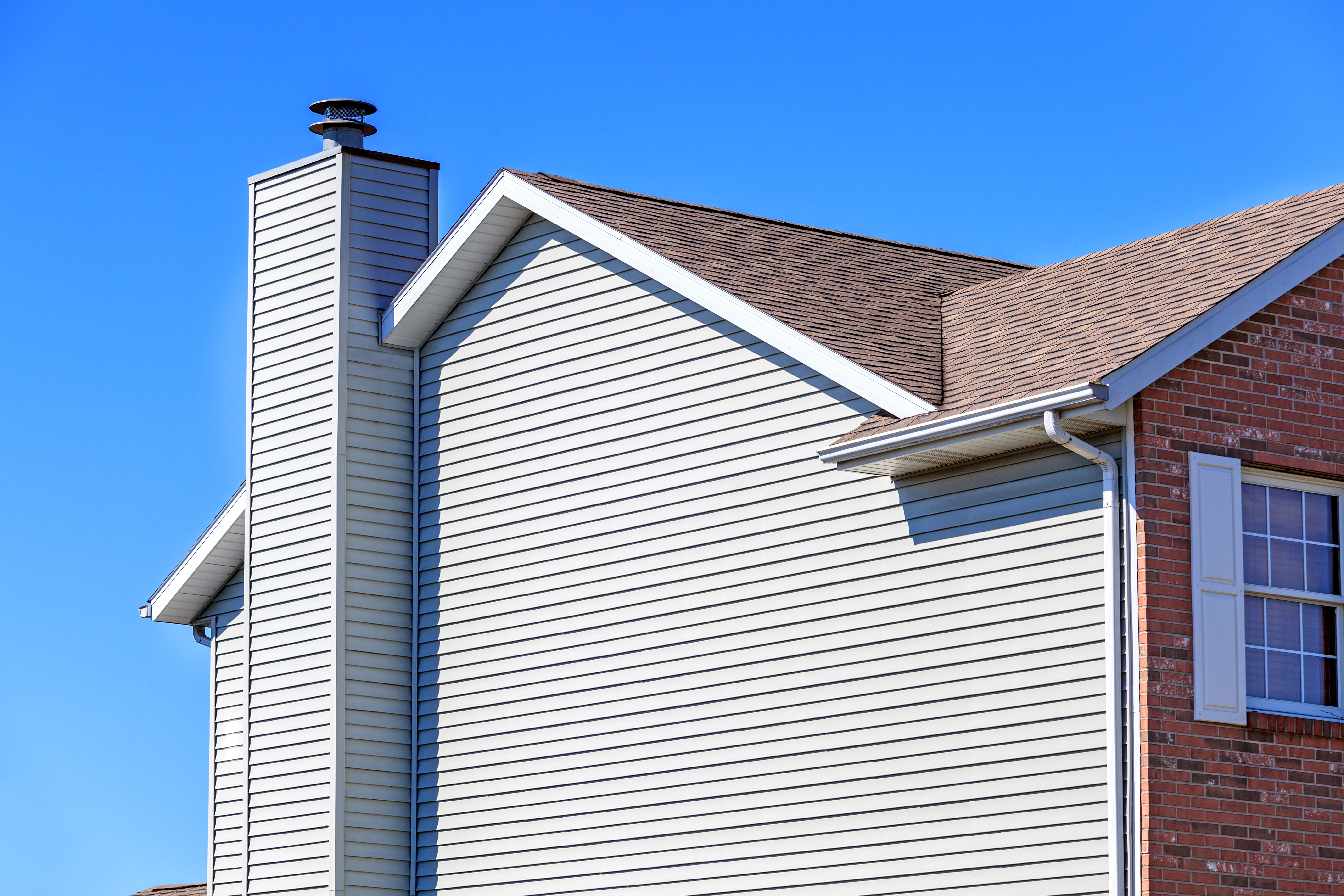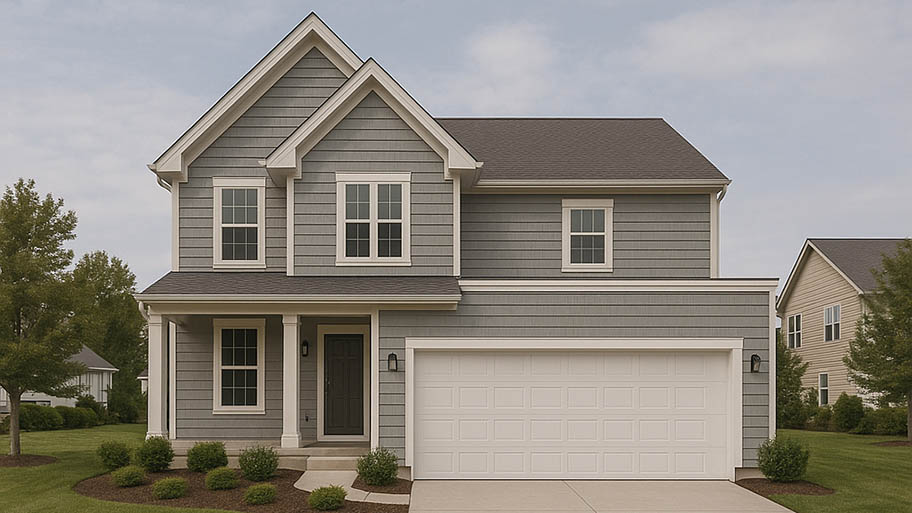
Fiber cement siding is durable, fire-resistant, and affordable. Learn more about fiber cement installation costs in Columbus, OH.
Siding repairs in Seattle cost $1,870 on average, but it can range from $842 to $2,969.


Fiber cement and vinyl siding offer strong moisture resistance.
Wood siding needs more frequent maintenance and repairs.
Older homes in Seattle may come with historic preservation rules that increase costs.
Complex architecture, tight property lines, and steep hills can make Seattle siding repairs more labor-intensive.
Siding repairs in Seattle cost about $1,870 on average, but it can range from $842 to $2,969 depending on the extent of the damage, the siding material, and how difficult it is for pros to access the area. This guide breaks down these and other cost factors so you can budget accordingly for your repair.
Seattle’s damp climate and frequent rain can wear down siding fast, especially on older homes with cedar shingles or mixed-material exteriors. Repair costs depend on several factors, including your home’s shape and size, as well as the type of siding you’re repairing.
Your home’s size and shape can play a big role in siding repair costs. Small homes with straightforward layouts are usually easier and less expensive to fix. But if your home has multiple stories, sharp roof angles, or architectural details like dormers or custom trim, expect higher labor costs, especially since Seattle’s mix of craftsman-style homes and contemporary builds often require extra care and precision.
| House Size in Square Feet | Average Siding Cost |
|---|---|
| 1,000 | $1,000–$13,500 |
| 1,500 | $1,500–$20,250 |
| 2,000 | $2,000–$27,000 |
| 2,500 | $2,500–$33,750 |
| 3,000 | $3,000–$40,500 |
In Seattle’s wet weather, siding material makes a big difference in terms of durability and repair cost. Fiber cement and vinyl tend to hold up well against rain and moisture, while wood siding, especially cedar, which is common in the Pacific Northwest, usually requires more frequent repairs. If your home is in a historic district, material restrictions can also limit your options and potentially raise the repair price.
| Siding Material | Cost per Sq. Ft. | Lifespan | Pros (Seattle) | Cons (Seattle) |
|---|---|---|---|---|
| Fiber Cement | $5–$14 | 50 years | Resists moisture and rot, great for rainy climates, low maintenance | Heavy, harder to install on multi-story or sloped-lot homes |
| Engineered Wood | $1–$6 | 20–40 years | Mimics classic wood look, easier to install than fiber cement, cost-effective | Needs strong sealing to prevent moisture intrusion, especially in constant rain |
| Vinyl | $3–$12 | 20–40 years | Budget-friendly, low maintenance, performs well in wet environments | Can warp in temperature swings, prone to mold and algae without regular cleaning |
| Wood | $1–$15 | 20–40 years | Popular in Seattle’s older homes, easily customized with paint or stain | High maintenance, vulnerable to rot and moss in damp conditions |
| Stucco | $7–$9 | 50+ years | Energy efficient, works well in modern or Southwest-style homes | Prone to cracking in constant rain or seismic shifts, costly to repair once damaged |
| Brick Veneer | $3–$10 | 70–100 years | Durable and fire-resistant, blends well with Northwest traditional architecture | Expensive to repair if moisture gets behind it, adds structural weight |
| Stone Veneer | $5–$11 | 20–75 years | Upscale aesthetic, long-lasting when installed correctly | Can trap moisture in Seattle’s wet climate, requires expert installation |
| Aluminum | $3–$6 | 20–40 years | Rust-resistant, recyclable, holds up to pests | Dents easily, can feel cold and noisy during heavy rain |
Seattle’s constant dampness puts steady pressure on siding, especially wood, which can rot, warp, or grow mildew if not carefully maintained. Most siding in the area needs repairs every two to six years.
Vinyl and engineered wood generally last longer than wood with fewer repair needs, but they may still loosen or discolor during wet seasons. Fiber cement is one of the most durable options for Seattle homes, but even that should be inspected every few years to catch early signs of damage before it gets out of hand.
Seattle’s older homes, especially craftsman and mid-century builds, often come with surprises once the siding starts coming off. It’s not unusual to uncover water damage, rotted sheathing, outdated insulation, or DIY fixes hidden underneath.
If the siding dates back far enough, there’s also a risk of uncovering lead paint or asbestos, which require special handling and disposal. Seattle has strict rules around construction waste, particularly for hazardous materials, so it’s a good idea to pad your budget by 10% to 20% for unexpected issues that might surface once demolition begins.
Siding repairs in Seattle aren’t always simple, especially with the city’s mix of craftsman bungalows, modern builds, and mid-century homes. Things like multiple stories, curved walls, and decorative trim can make even small repairs more time-consuming and labor-intensive, and therefore more expensive.
If your home is in a designated historic district, like Capitol Hill or Queen Anne, you may face restrictions on materials and appearance, which can require specialty work or custom matching, potentially increasing costs. The more detailed the architecture and the stricter the neighborhood guidelines, the higher the labor costs will be.

Seattle’s hilly terrain, dense neighborhoods, and tall homes can make siding repairs tricky to access. If the damaged area is up high or hidden behind trees or fences, contractors may need scaffolding or lift equipment to reach it safely. These extra steps can drive up labor costs, especially in areas like Wallingford or Capitol Hill, where space is more limited and homes are packed close together.
Most Seattle siding contractors include basic cleanup in their estimates, but jobs that involve extensive cutting or demolition can leave behind more debris than you might expect. Seattle has strict rules around construction waste, and certain materials, like lead paint chips and asbestos siding, require special disposal.
If your project uncovers hazardous materials or just generates a large amount of debris, you may see extra charges for hauling and proper waste handling, especially if city dump regulations or recycling requirements come into play.
If your siding repair involves updating materials or matching a historic look, you may need input from an architect or designer. This is particularly true in neighborhoods with preservation guidelines, like parts of Capitol Hill and Queen Anne, where maintaining the home’s original character is required. Design fees typically range from a few hundred to a few thousand dollars, depending on the complexity of the project and how much customization and coordination is involved.
Hiring a siding pro in Seattle means accounting for more than just the materials and labor. Permits, insurance, licensing, and local tax rules can all add to your final bill.
In Seattle, siding repair pros usually charge $45 to $85 per hour or $1.50 to $6 per square foot, depending on the scope of work and the home’s layout. Labor often makes up the bulk of the cost, particularly if your house has multiple stories, complex architecture, or damage that requires careful prep and sealing. Homes in historic districts or densely built neighborhoods may also come with added costs, since skilled contractors who know how to work around tight spaces and preservation guidelines often charge a premium for their expertise.
You typically need a permit for siding repairs that involve replacing materials, altering structural components, or repairing a home in a designated historic or environmentally protected area. Permit fees usually range from $200 to $500, but if your property is located in a historic district like Ballard or faces shoreline or steep slope regulations, the costs can go up.
In Seattle, siding contractors must be registered with the Washington State Department of Labor and Industries. To legally work on residential homes, they also need general liability insurance and a contractor's bond. Always ask for a contractor’s license number and proof of insurance before starting a project to make sure they (and you) are properly covered.
Washington considers construction services like siding repairs a taxable retail service, so in Seattle, sales tax applies to both materials and labor for siding repairs and installation. The combined sales tax rate is 10.35% (6.5% Washington state tax plus 3.85% local taxes), and it’s charged on the full cost of the job regardless of whether your contractor itemizes materials and labor separately or bundles them into a single quote.
For larger or more complex siding projects, you might need more than just a general siding crew:
Architect: If your project involves restoring a historic home or blending new siding with existing architectural details, an architect can help ensure the design looks intentional and meets any preservation requirements. Fees typically range from 5% to 20% of the total project cost.
Structural Engineers: If siding removal reveals damage to structural elements, like load-bearing walls, a structural engineer will need to assess and approve the fix. Expect to pay $350 to $800 for an evaluation.
Asbestos Abatement Contractors: Many older Seattle homes still have siding that contains asbestos or lead paint. If that’s the case, a certified abatement contractor must handle the removal. This service generally costs between $1,200 and $3,300, depending on the size and scope.
Yes, siding repairs can boost your home’s value in Seattle, especially when they improve your curb appeal by addressing visible damage before selling. In a market where first impressions matter, a clean, well-maintained exterior can make a big difference. Even partial repairs can help a home appear more cared for. In older neighborhoods like Capitol Hill or Queen Anne, repairs that preserve original woodwork and match historic details tend to add the most value.
Home is the most important place on earth, which is why Angi has helped more than 150 million homeowners transform their houses into homes they adore. To help homeowners with their next project, Angi provides readers with the most accurate cost data and upholds strict editorial standards. We survey real Angi customers about their project costs to develop the pricing data you see, so you can make the best decisions for you and your home. We pair this data with research from reputable sources, including the U.S. Bureau of Labor Statistics, academic journals, market studies, and interviews with industry experts—all to ensure our prices reflect real-world projects.
Want to help us improve our cost data? Send us a recent project quote to [email protected]. Quotes and personal information will not be shared publicly.
From average costs to expert advice, get all the answers you need to get your job done.

Fiber cement siding is durable, fire-resistant, and affordable. Learn more about fiber cement installation costs in Columbus, OH.

In addition to protecting against extreme Midwest temperatures, new siding in Columbus adds curb appeal. Learn about siding replacement cost in Columbus.

New vinyl siding adds value and curb appeal to homes in Columbus, Ohio. Learn about average vinyl siding installation costs in Columbus, Ohio.

Not sure you want to go with the standard siding material for your home? Learn about vinyl siding pros and cons to see if there’s a better option.

Discover the pros, cons, and everything else you need to know about insulated vinyl siding.

From clapboard to shiplap, there are tons of wood siding types for you to choose from. Here’s a run-down of the ten most popular types of wood siding.